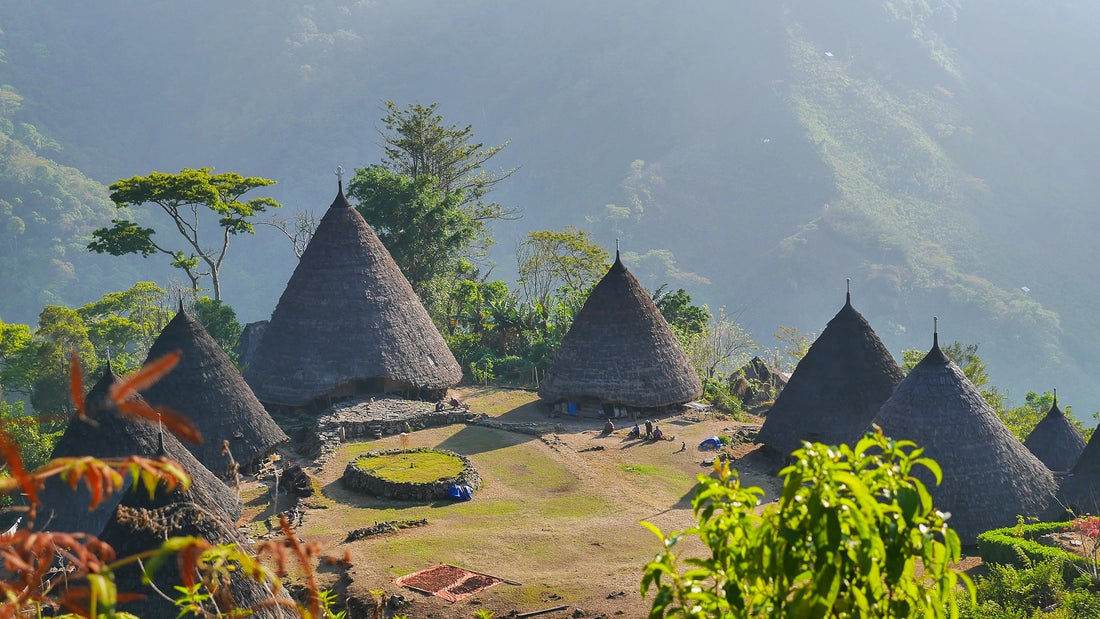Located in the Java Sea, approximately 83 kilometers from the northern coast of Jepara, Karimunjawa Island is one of Indonesia's exotic marine tourism destinations. Known as the "Caribbean of Java," this archipelago offers the charm of white sandy beaches, crystal clear waters, and diverse marine life. Karimunjawa is a perfect destination for snorkeling and diving enthusiasts, and those seeking to experience the beauty of pristine tropical nature. Karimunjawa consists of 27 small islands, of which only a few are inhabited, while most are uninhabited, surrounded by crystal clear waters. This makes Karimunjawa a favorite destination for snorkeling, diving, and enjoying the beauty of the beaches. Karimunjawa has been designated a National Park by the Jepara government since March 15, 2001. Karimunjawa is home to coral reefs, mangroves, coastal forests, and nearly 400 species of marine life, including 242 species of ornamental fish. Wonderful Indonesia: Some of the rare fauna...
Wae Rebo is a traditional village located in a remote hamlet in Manggarai Regency, East Nusa Tenggara Province. Known as the village above the clouds, Wae Rebo is located at an altitude of 1000 meters above sea level surrounded by beautiful hills. Wae Rebo was declared by UNESCO as a World Cultural Heritage in August 2012, beating 42 other countries.
To reach Wae Rebo, visitors must travel about 6 km from Dintor Village to Denge Village by motorcycle. The journey from Denge to Wae Rebo approximately takes 3 hours of hiking through a remote area surrounded by dense unspoiled forests, crossing rivers, and crossing the lip of a cliff.
Although the location is far from the crowds and difficult to reach, Wae Rebo Village is very famous, especially by foreign tourists from European countries because of its architectural design that has a high appeal. One of the highlights of Wae Rebo Village is its traditional cone-shaped houses with roofs made of palm leaves. The villagers' handicrafts, coffee products, vanilla, and cinnamon bark sell well as souvenirs that tourists bring home at a satisfactory price.
It's not hard to fall in love with this village. Visitors can feel the uniqueness of the culture, customs, friendliness of the people and local wisdom that still feels thick in this village.
The founder of Wae Rebo Village is a man named Empu Maro. He built the village around 100 years ago and then preserved by the local population until now reaching the 18th generation of descendants. One of the unique and distinctive features of Wae Rebo is the tall, cone-shaped Mbaru Niang traditional house covered in palm grass from the roof to the ground.
This Mbaru Niang house has five levels, and each level is designed for a specific purpose. The first level, called the lutur or tent, is where the extended family lives. The second level, called the lobo or attic, is specialized for storing food and goods. The third level, called the lentar, is where seeds are stored for the next planting season. The fourth level called lempa rae is for storing food supplies in case of drought. Finally, the fifth and top level called hekang kode, also considered the most sacred, is where offerings are made to the ancestors.
Well, there is one house that is devoted to ritual purposes for the people in Wae Rebo Traditional Village. The local population in this village is predominantly Catholic but still adheres to old beliefs. In this house are kept sacred heirlooms in the form of drums and gongs.
With a small population of around 1,200, the village consists of 7 houses. The villagers' staple foods are cassava and corn. However, around the village, they also grow coffee, vanilla, and cinnamon which they sell at the market located about 15 km from the village. Recently, Wae Rebo Traditional Village has become increasingly popular as a tourist destination for domestic and foreign ecotourism enthusiasts. This of course also adds to the economic prosperity of the village.


Comments